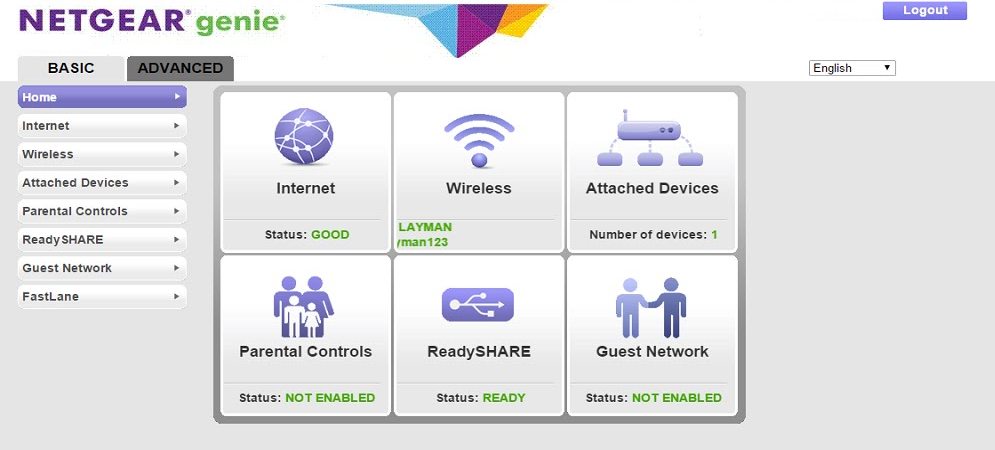

- #Netgear genie dhcp clients how to#
- #Netgear genie dhcp clients for mac#
- #Netgear genie dhcp clients manual#
- #Netgear genie dhcp clients full#
If the subnet mask is 255.255.255.0, then you know the first 3 bytes are the network ID (192.168.1) and your broadcast IP address is 192.168.1.255. For example, in a Class C IPv4 network-which most small local networks are wont to be-you may find your computer’s IP address is, let’s say, 192.168.1.75. Your computer will then display its own IP address, subnet mask, gateway address, and more, making it possible for you to determine the network number you’ll be scanning.
#Netgear genie dhcp clients for mac#
Enter the command “ipconfig” for Mac or “ifconfig” on Linux.To rapidly scan a network yourself using native operating system (OS) capabilities, follow these steps. This method is best for those looking to perform a rapid, one-time device check or for those heading smaller organizations with a more manageable device list.
#Netgear genie dhcp clients manual#
The most basic way to find all the IP addresses on a network is with a manual network scan.
#Netgear genie dhcp clients full#
When organizational members experience problems connecting their device to the network or the internet, having a full list of IP addresses on the network can guide administrators as they troubleshoot and restore order.
#Netgear genie dhcp clients how to#
Knowing how to scan the network for devices is the first step, and one of the most fundamental, in managing IP addresses. How to Find All IP Addresses on a Network To maintain good network health and prevent unauthorized users from spying or wasting valuable bandwidth, admins are expected to not only know how to scan their network for devices but also understand the importance behind IP address management.

This guide describes how IP address scanners help empower IT departments to better track the many devices within a network, identify when IP addresses have been mislabeled or misallocated, and detect possible breaches, in addition to diving deeper into the why and how of IP address management from answering basic to advanced IP address strategies. With the number of networked devices skyrocketing, network administrators must know how to scan their network for devices, track IP addresses, and perform IP address management. Positioning Your Organization for Success The Importance of IP Addresses in Networking SolarWinds IP Address Manager (Free Trial)ĥ.SolarWinds Network Performance Monitor (Free Trial)Ħ. SolarWinds User Device Tracker (Free Trial) How to Find All IP Addresses on a Networkġ. With more devices comes more risk of networking complications and potential breaches-especially given the BYOD (Bring Your Own Device) trend, which allows employees to connect to company Wi-Fi via their personal mobile phones and laptops. As the Internet of Things (IoT) continues to endow more and more devices with smart capabilities, networking grows more complex, making IP-centered network security measures a business imperative. If you do not know your primary and secondary DNS addresses, contact your ISP for assistance.Amid predictions that 75.44 billion devices will have internet connectivity by 2025, IP address management has become a fundamental housekeeping and security concern for any networking admin. Enter your primary DNS and secondary DNS addresses.Under the Domain Name Server (DNS) Address section, select the radio button for Use these DNS Servers.Launch a web browser from a computer or WiFi device that is connected to your NETGEAR router.To set static DNS servers on your NETGEAR router: However, if your device needs specific DNS server addresses, you must assign them to your router manually. Most Internet service providers (ISPs) automatically assign DNS server addresses to your router. Computers communicate and access the Internet using IP addresses. A Domain Name System (DNS) server converts domain names into IP addresses.


 0 kommentar(er)
0 kommentar(er)
